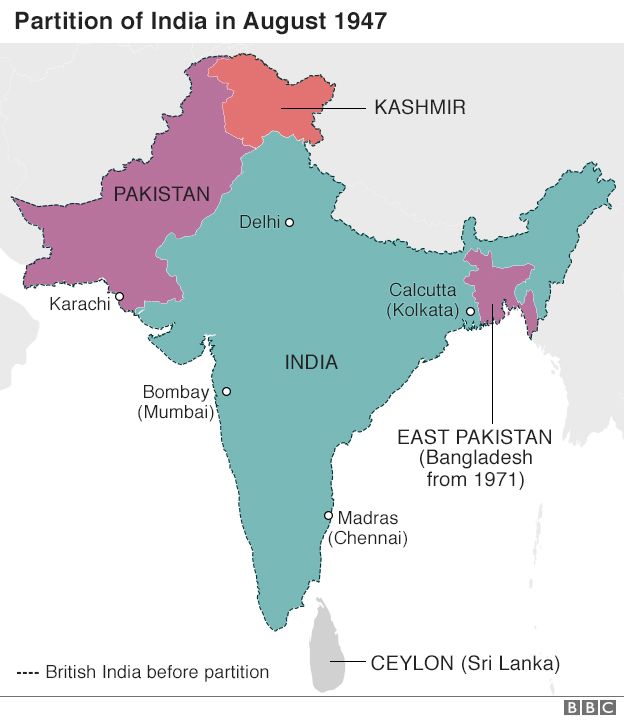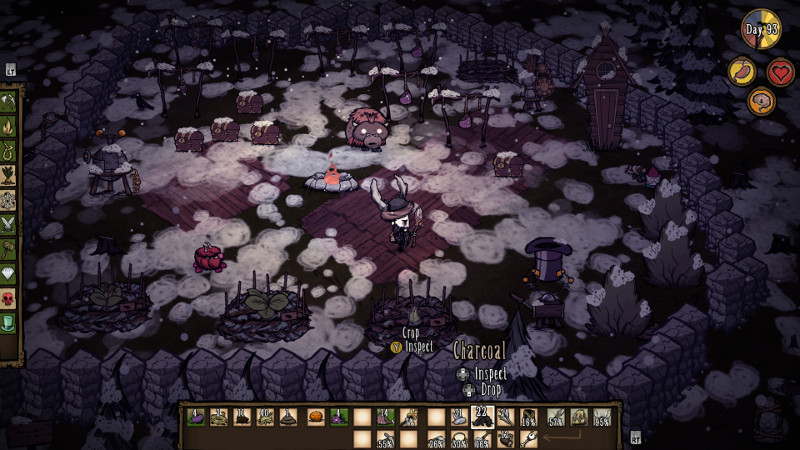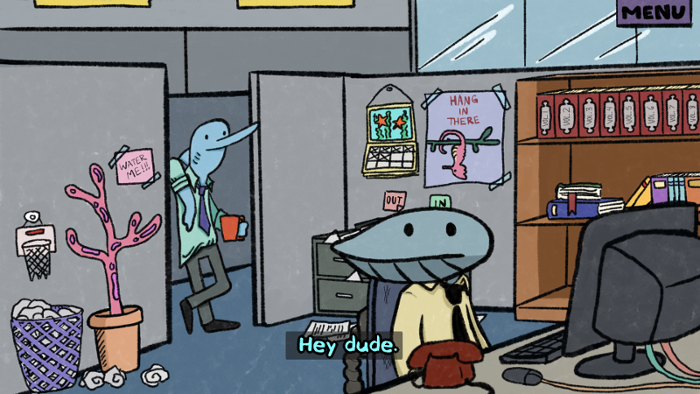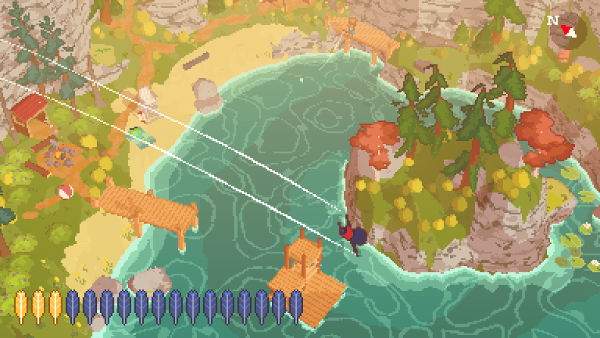Latest reviews
Oberberg. Karin Nagelschmidt hat ihren ersten Roman vorgelegt: „Die Erbschaft”, erschienen im Bergischen Verlag. Es ist kein Lokal-Krimi, sondern eine spannende Beziehungsgeschichte. Motor der rätselhaften Handlung ist der kürzlich verstorbene Frank. In seinem Testament hinterlässt er seinen ehemaligen Studienfreunden Orazio, Gregor und Valentin ein Vermögen und eine Villa in Nizza. Einzige Bedingung: Sie müssen das Vermögen in ein humanitäres Projekt in Köln investieren, das sie als Team zu gründen haben, in knapper Frist. Erst dann gehört ihnen die Villa. Dummerweise hat sich das Trio seit 14 Jahren aus den Augen verloren. Ist die Aussicht auf die Villa Grund genug, sich zusammenzuraufen? Schon bald stellt sich heraus, dass die Männer weit davon entfernt sind, ein Team zu sein. Und der Notar Dr. Veith heizt mit Briefen des Verstorbenen die schwelenden Konflikte immer wieder an.
Erzählt wird aus der Sicht des Orazio, Kunsthistoriker mit einem Hang zu hübschen Frauen. Seine Ehe mit der kränkelnden Miriam ist freudlos, trotz der beiden Mädchen, die Orazio über alles liebt. Gregor ist der skeptische Macher, der hinter dem Nachlass üble Tricks vermutet. Valentin ist ein poetischer Träumer. Und Ada ist seine Freundin, die mit hocherotischer Ausstrahlung die Gruppe zu sprengen droht.
Nagelschmidt gelingt eine klare Figurenzeichnung der Protagonisten. Die Frauen bleiben geheimnisvoll bis zum Showdown, der alle mit Schuld und Verstrickung konfrontiert. Geschickt meidet die Autorin hier die Gefahr, ins Allversöhnende abzugleiten. Lokalkolorit ist bei ihr nie heimattümelnder Selbstzweck, sondern dient der Figurendarstellung. So entsteht eine spannende Geschichte über Liebe, Verrat und Verantwortung, Am überraschenden Ende staunt Orazio, „wie viel Einfluss das Ungesagte doch hat”. Und der Leser empfindet mit den Helden schließlich eine Art Einverständnis mit dem Leben.
Die Autorin (* 1957 in Köln) ist frisch pensionierte Lehrerin des Kaufmännischen Berufskollegs und lebt seit 30 Jahren in Gummersbach. Ihr Talent hat sie u.a. in der Gummersbacher Schreibwerkstatt entwickelt. Ihr großes Thema sind die Menschen und ihre Milieus, die sie gern und genau beobachtet. „Über mich selbst möchte ich gar nicht schreiben. Da fehlt mir die nötige Distanz.”, sagt sie im Gespräch. Das war auch der Grund, weshalb sie die männliche Perspektive für ihren Roman gewählt hat. „Mich interessiert, was der einzelne unter einem guten Leben versteht.” Und sie fragt nach den Irrtümern, an denen wir oft krampfhaft festhalten – zumindest im Roman kann sie die Menschen davon befreien. Ihr nächstes Buchprojekt wird von Flucht und Verfolgung erzählen: „Jetzt habe ich die Zeit dafür.”
Karin Nagelschmidt: Die Erbschaft – Bergischer Verlag, 317 Seiten, ISBN 978-3-945763-76-6, 13,95 €
19-year-old Gail and Zella Kastner, identical twins born to a Montreal family, were honors students in high school, “popular with the boys and in love with skating and horse-racing” [source]. But one day in 1953, Gail made the fateful decision to seek help for mild depression anxiety at the highly reputable Allan Memorial Institute.
What followed was a journey through hell: electroshock treatments, drugs, and attempts to “de-pattern” her brain—reprogramming her personality in an attempt to cure her.
She emerged in a childlike state: sucking her thumb, talking like a baby, demanding to be fed from a bottle, and urinating on the floor. She also suffered memory loss and couldn’t recognize members of her own family, not even her twin sister, Zella [source]
Gail’s life derailed, and it’s only after long legal battles that she was awarded modest damages in 2004. Many more patients would be subjected to these destructive techniques by the institute’s founding director, Ewen Cameron, a towering figure in international psychiatry at the time. His work on de-patterning and “psychic driving” would become known as the Montreal experiments.
Gail’s story is referenced in a single sentence in Stephen Kinzer’s new book, Poisoner in Chief, a biography of Sidney Gottlieb, the head of the CIA’s notorious MK-Ultra program. As part of the program, the CIA became aware of Cameron’s work, and decided to invest in his research by way of a front group ominously called the “Society for the Investigation of Human Ecology”.
But more than MK-Ultra’s notorious experiments with LSD, which Kinzer describes in detail, the Montreal experiments help us to draw the line between what happened in the 1950s and the “enhanced interrogation techniques” applied at CIA black sites around the world. Sensory deprivation, noise, endlessly repeating recorded messages: these methods have stood the test of time in the psychological torturer’s arsenal.
That’s also the perspective of a new documentary, Eminent Monsters, by Stephen Bennett, which focuses heavily on Cameron’s experiments, on the treatment of the “Hooded Men” in Northern Ireland in 1971, and on torture in the “War on Terror”. (You can watch it in full on Prime Video.)

While Ewen Cameron directed its work, many patients were admitted to the Allan Memorial Institute with mild symptoms and left with lifelong psychological damage. (Credit: The Cosmonaut. License: CC-BY-SA.)
In contrast, Kinzer’s book tells the whole story of Gottlieb’s work, or at least the parts which we have a record of. Gottlieb was involved in many of the CIA’s dirtiest plots—from an assassination plan targeting Patrice Lumumba (who was later killed in a Belgian-backed plot) to CIA-run brothels in the United States where patrons of sex workers were drugged and observed. Other highlights of Gottlieb’s career include:
-
Overseeing work at black sites like the notorious Camp King, where the US collaborated with nazi war criminals like Kurt Blome to conduct experiments on enemy prisoners, often ending in death;
-
Organizing a massive campaign to test LSD on thousands of students by funneling grant money to researchers—a campaign so vast that it unintentionally sparked the prominent role of LSD in student counterculture (John Lennon famously said: “We must always remember to thank the CIA and the Army for LSD”);
-
Drugging Frank Olson, a key figure in these programs, with LSD at a staff retreat. A few days later, Olson plunged to his death from a hotel window.
Kinzer paints Gottlieb as a troubled figure, a man with humanist sensibilities, who may have been riddled with guilt later in his life. Not a sadist, but someone who was radicalized by America’s anti-communist fanaticism to do whatever it takes in order to counter exaggerated or imagined threats.
There’s some gallows humor in these tales of a CIA so obsessed with LSD that people had to worry about spiked punch at Christmas parties, of experiments so bizarre that only the later Stargate Project (which sought to mobilize psychic “remote viewing” powers for intelligence) could top them.
Kinzer’s book is well-researched and includes some new and little-known material. As a biography, it is ultimately focused on the man Gottlieb, an approach which sometimes gets in the way of illuminating the context and consequences of his work. Bennett’s Eminent Monsters focuses more narrowly on the topic of psychological torture. While it is unlikely to dissuade those who believe that such methods are necessary to fight terror, it does a great job explaining their history and centering the victims.
Poisoner in Chief and Eminent Monsters are important contributions to understanding the intellectual foundations for modern torture programs. They also remind us of the importance of effective oversight of any intelligence agency, and what happens when “patriotic” fervor meets immense power without accountability.
The Princess Bride was only a moderate success at the box office, but since its release in 1987, it has become a cult classic. Its lovable characters left an indelible impression on many, and the film has bestowed us several pop culture quotes and assorted GIFs, e.g.:
-
“Inconceivable!” — “You keep using that word. I do not think it means what you think it means.“
-
“Hello, my name is Inigo Montoya. You killed my father. Prepare to die.“
-
“You seem a decent fellow… I hate to kill you. “ — “You seem a decent fellow… I hate to die. “
This one’s a classic, too:

The movie is based on a book, and if William Goldman is to believed, that book was written by a Florinese author named S. Morgenstern a long time ago, re-released in translated and abridged form by Goldman in 1973. Of course, he is most definitely not to be believed—but the fake origin story adds a charming narrative layer to Goldman’s novel.
At its heart, The Princess Bride is a comedic story of true love between Buttercup, a farmer’s daughter, and Westley, a farmhand. Their love is imperiled by the machinations of one Prince Humperdinck and his sadistic right-hand man, Count Rugen. Along the way, Buttercup and Westley cross paths with Inigo Montoya (a Spanish master swordsman), Fezzik (a Turkish giant), and Vizzini (a Sicilian criminal genius)
Compared with the movie, the book gives Inigo a proper backstory, helping lend emotional weight to the final confrontation between Inigo and the six-fingered man who killed his father. We also learn more about Fezzik the giant, although it’s a fairly worn out tale (the sweet, gentle giant who reluctantly learns how to use his strength).
But what of Buttercup? While she gets to boss Westley around for a bit in the beginning, she is quickly reduced to the traditional traits of princesses: beauty and devotion. One can argue that the book takes its stereotypes to such ridiculousness that they lose normative power, but that argument only goes so far.
Still, what saves The Princess Bride from becoming conventional and boring is its sense of humor. From the Rodents of Unusual Size (R.O.U.S.) to the Zoo of Death, from Miracle Max and his questionable cures to Goldman’s tall tales about S. Morgenstern, the book is an entertaining page-turner.
Modern editions include the first chapter of Buttercup’s Baby, a sequel to The Princess Bride that was unfortunately never completed (Goldman died in 2018). It gives us a small glimpse of further adventures that could have been.
Not everyone will adore The Princess Bride as much as its many devoted fans do, but if you are a lover of adventure and comedy, it may well earn a special place on your bookshelf and in your heart, or the heart of a smaller human you read it to.
After a long, bloody history of colonial rule, Britain finally abandoned in the Indian subcontinent in 1947. Against significant opposition, the Brits negotiated the partition of India into India and Pakistan. This led to a refugee crisis, mass violence, and the deaths of between 200,000 and 2 million human beings. The resulting so-called “Muslim homeland” of Pakistan was not the nation we know today, but a country divided into West Pakistan and East Pakistan, with a whole lot of India between them:

Partition resulted in a bizarre post-colonial map, with a divided “Muslim homeland” (home to millions of non-Muslims) bordering India. Credit: BBC. Fair use.
Less than 30 years later, the fiction of East Pakistan collapsed in genocide and war. After an election that would have shifted the balance of power to the Awami League, which sought independence for the East, Pakistan responded by abandoning its brief experiment with democracy and sent in its troops from the West. They unleashed atrocities that killed between 300,000 and 3 million people (often with weapons Pakistan had bought from the US). Hindus were singled out for extermination and expulsion, making this a genocide by every definition.
This spurred a refugee crisis that overwhelmed neighboring India, giving it cause and pretext to arm its Bengali neighbors and, ultimately, help them fight the Bangladesh Liberation War. The country of Bangladesh was born from the blood and the ashes. Brutal revenge killings against anyone who was seen as a collaborator with the Pakistani military followed.
The Blood Telegram by Gary J. Bass tells this story with special focus on the actions of US foreign policy decision-makers, chiefly Richard Nixon and Henry Kissinger. Nixon had developed a personal friendship with Pakistan’s dictator, Yahya Khan, and sought to preserve a strategic alliance with Pakistan, in part in order to use Yahya as a secret diplomatic channel in the planned opening of relations with the People’s Republic of China.
Bass uses the Nixon White House tapes, interviews, and countless historical documents to reconstruct a detailed picture of how the US government and its foreign policy apparatus responded to the genocide as it unfolded in East Pakistan.
A very clear picture emerges: Nixon and Kissinger did not care about the genocide, declined to put any pressure on Yahya to stop it, and bullied internal dissenters into silence. They refused to stop all pending arms transfers, and when the Bangladesh Liberation War started, they illegally used third countries (Iran, still ruled by the US-backed Shah, and Jordan) to funnel weapons to Pakistan. They tried to draw China more deeply into the conflict, and threatened India with an aircraft carrier.

“Salt Lake” refugee camp in Calcutta. Millions of refugees from the genocide overwhelmed India, a country already struggling with extreme poverty. (Credit: Raghu Rai. Fair use.)
“Our government has failed”
The “Blood Telegram” of the title was sent by Archer Blood, then US Consul General in Dacca soon after the genocide started. The diplomatic staff were witnessing the mass killings firsthand, and after repeatedly warning their superiors about the unfolding crisis, they prepared a confidential dissent statement to express their deep concern with US foreign policy.

Excerpt from the “Blood Telegram” itself, April 6, 1971.
Blood did not sign the statement, but he expressed his agreement with its contents. For his dissent, Nixon and Kissinger recalled him to the State Department’s personnel office back in DC.
Even in isolation, any defense of US foreign policy towards the 1971 genocide does not withstand scrutiny. There was no “pragmatism” here, because the US did not pragmatically push for political stability when it had the opportunity to, nor did it pragmatically choose one of the many alternatives for creating an opening with China.
Bass shows the role of emotion and prejudice in decision-making. Kissinger, who cultivates an image of a wise statesman and master of “realpolitik”, was ranting and raving about the Indians along with Nixon, and the two of them outdid each other with bizarre analogies (Yahya was “Lincoln”, the Indians were “Nazis”, Pakistan was being “raped” by India). The best that can be said about their actions is that they provided (inadequate) humanitarian aid to India in a “too little, too late” attempt to avert or delay war.
One fascinating aspect of this history is the role of the Soviet Union. An authoritarian regime, it allied itself with democratic India and supported the liberation of Bangladesh. In a complete reversal of Cold War stereotypes, here it was the Soviets who defended democracy and human rights, for their own reasons that were far more cool and pragmatic than Nixon’s emotional allegiance to a military dictatorship that pursued a course of self-destruction.
An incomplete portrait
The Blood Telegram is neither a full accounting of the events that led to the creation of Bangladesh, nor a comprehensive view of America’s foreign policy under Richard Nixon and Henry Kissinger. While Bass hints at other evils—the brutal escalation of the Vietnam War, the carpet-bombing of Cambodia, the installation of a murderous dictatorship in Chile—he focuses on his central thesis: different choices could have prevented or slowed the killing in East Pakistan.
Bass makes this case with commendable scholarly rigor, but an obsessive level of detail about the Nixon/Kissinger dynamic takes up space that could have been used to place these events in their larger context. In isolation, America’s complicity in the genocide in East Pakistan may seem like a historical abnormality. In the larger history of US foreign policy, which is littered with millions of avoidable deaths, it’s not the specific behavior of Nixon and Kissinger that was historically abnormal, but the vocal dissent represented by the Blood Telegram.
Homo sapiens spent 99% of its existence on Earth in a hunter-gatherer lifestyle. So it’s perhaps no surprise that the game Don’t Starve, where you gather twigs and berries and set traps for rabbits, has an incredibly addictive quality to it. Released by Canadian indie studio Klei Entertainment in 2013, Don’t Starve has since spawned a multiplayer variant and a fair amount of downloadable content (DLC).
The base game will keep you busy for a while. It combines roguelike elements (procedurally generated worlds) with crafting, farming, a day/night cycle, seasons, and many different ways to die.
For starters, there’s darkness itself: if you spend more than a few seconds in total darkness, you will die from mysterious causes. If you don’t eat, you starve (duh!). If you don’t find ways to preserve your food, it slowly spoils in your inventory. If you don’t sleep, you slowly go insane. Every few nights you get attacked by ever-growing packs of hounds. During winter, you may freeze to death. Or you could get killed by bees, frogs, spiders, giant birds, tentacles, pengulls, beefalo, did I mention tentacles, and myriad other creatures.

A small walled camp with a tamed baby beefalo, farms, and drying racks for meat. (Credit: Klei Entertainment. Fair use.)
Still, after a few early deaths (and maybe after reading a few spoilers online), the game becomes surprisingly chill. Most creatures don’t attack unless provoked or approached, and you can craft yourself a little fortress and prepare a good defense against the regular hound attacks. Just as you’ve gotten the hang of it, Don’t Starve lures you into Adventure Mode, where you get to face off against the game’s antagonist, a pinstripe-wearing half-demon named Maxwell, in extra-hard challenge worlds.
You also quickly unlock most of the game’s playable characters, all with different skills and weaknesses. So far I’ve mostly played as Wilson, but I look forward to playing as creepy-girl-with-the-dead-sister Wendy or as Woodie, a lumberjack with a talking axe.
As you may have guessed by now, the game does not go for realism: its art style is influenced by Tim Burton, and its world is littered with magical items and the means to craft them. You will also encounter sentient pig creatures living in little houses, who can be tamed to do your bidding, or brutally killed and turned into football helmets and meat.
Procedural generation works best if it creates worlds that feel like places worth visiting, not just empty rooms and corridors. Each game world in Don’t Starve is a place to be navigated: where are the rocks to mine, the berries to harvest, the trees to fell? As you survive days and nights, your brain starts to map out these game worlds just like it does any other place.
The Verdict
Don’t Starve is a masterclass in game design, with excellent controls and menus that make the complexity of its mechanics a joy to manage. While I didn’t find the artwork very appealing at first, it quickly grew on me, thanks to lighting and sound effects, cute animations and funny dialogs, and the living rhythm of the game’s plants and creatures.
The game has its dull moments where you just gather resources or wait for night to turn into day. But these quiet minutes also present opportunities to organize your inventory, to craft a needed item, or to plan out the next day.
Don’t Starve is available for virtually every platform now (including Linux, Android, and Nintendo Switch), and you can regularly find the Steam or GOG version on sale for $5 or less. Developer Klei Entertainment also deserves credit for publicly renouncing “crunch time” and pledging not to overwork its developers. I highly recommend the game, and I look forward to checking out Klei’s other titles, nearly all of which have received very favorable reviews.
I’m a big fan of point and click adventures (think The Secret of Monkey Island), a genre that’s frequently been declared dead but that is in fact thriving thanks to crowdfunded major efforts like Broken Age (reviews) and Thimbleweed Park (reviews), smaller studios like Wadjet Eye, and releases by even smaller teams or solo developers. Clam Man is very much the latter, developed by “Team Clam” which appears to comprise three collaborators.
The game is set in a world dominated by anthropomorphic aquatic creatures. You play Clam Man, an ordinary bloke working as a junior sales representative at Snacky Bay Prime Mayonnaise. After Clam Man gets fired for no apparent reason by his crab boss, he begins to uncover a larger mayo-centered conspiracy. Does it go all the way to the top? Mr. Man will try to find out.

Not all is as it seems at Snacky Bay Prime Mayonnaise. (Credit: Team Clam. Fair use.)
It’s all ridiculous, of course, but some of the jokes are quite funny, and the minimalist hand-drawn art is often very charming. This is only a two hour game, the mouse controls are a bit frustrating, and the writing and artwork don’t quite hold up throughout the short playtime, so the current asking price of $10 is a bit high.
If you already own the game from The Mother of All Bundles, or if you can get it for $5 or less, you’re unlikely to regret your visit to Snacky Bay. Team Clam is certainly one indie developer to keep an eye on.
Der Campingplatz lädt durch eine vielzahl positiver Eigenschaften zum längeren Verweilen ein.
Auch der Aufenthalt auf den angenehm gelegenen Übernachtungsstellplätzen ist sicherlich lohnenswert.
Der Aufbau des Platzes ist terassenförmig. Es gibt Komfort(stell)plätze mit ausreichend Platz um nicht mit den Nachbarn Tür an Tür zu sitzen.
Das Restaurant am Platz bietet eine angenehme Auswahl an gut bürgerlichen Gerichten, die gut umgesetzt sind und ebenso schmecken.
Für Kinder gibt es einige Angebote, täglich wechselnd, wie z.b. Ponyreiten oder auch eine kleine “Wanderung” mit Fackeln.
Wir waren mit unserem einjährigen Kind im Wohnmobil an einem Komfortstellplatz.
Zu unserem Bedauern wurde das Plantschbecken entgegen anderer Aussage, nicht in Betrieb genommen. So konnten wir mit unserem Kind nur ins Schwimmbecken was natürlich nicht denselben Spaß bedeutet. Zum Abkühlen hat es gereicht.
Der Kiosk hat zwar feste Öffnungszeiten, diese werden jedoch nicht (immer) eingehalten. An einem heißen Sonntag mussten wir zwei Stunden länger warten um etwas trinkbares zu bekommen.
Gestört haben uns die späten Ruhezeiten, ab 23 Uhr, die das ein oder andere Mal durch Nachbarn genutzt wurden, sowie das ein Dauercamper uns mit seinem tollen Pizzaoffen einen Nachmittag und Abend lang eingeräuchert hat, da dieser mit offenem Feuer betrieben wird. Unser Kind wurde während des Mittags und abendlichen Schlafs entsprechend eingeräuchert, da es zu warm war um die Fenster im Wohmobil geschlossen zu lassen.
Der Platz ist aus unserer Sicht gut geeignet für “Übernachtungsgäste” und Personen mit älteren Kindern oder ohne Kinder, die keine Ruhe brauchen.
Im Jahr 2061 droht die Sonne zu einem roten Riesen zu werden. In 100 Jahren wird es die Erde nicht mehr geben und in 300 Jahren wird das Sonnensystem nicht mehr da sein. Es gibt eine Erdregierung, die beschliesst die Erde mit Raketen in das 4.2 Lichtjahre entferne Alpha Centauri Sternensystem zu bringen.
A depiciton of scenes with minimalist graphics and some objects in places/situations that are out of the ordinary. The only interaction happens at pauses where you are forced to click flashing objects to move to the next segment.
I made it through 3 uninspiring scenes before tapping out. I found the style interesting, but it didn’t go anywhere. The scenes aren’t pretty enough to be appreciated solely for beauty and I found no insight in the places forms were changed from the ordinary.
A Short Hike lets you explore the colorful, pixelated world of Hawk Peak Provincial Park in the role of a vacationing anthropomorphic bird named Claire. Your mission, should you choose to accept it, is to make it to the top of Hawk Peak, ostensibly in search of cell phone reception.
As you make your way through the park, you meet a diverse cast of animal characters. Some offer you side quests, others are simply pursuing their own adventures in the park. It’s up to you whether you want to accept any of these quests, but if you want to make it to the peak, you’ll need to at least obtain a few golden feathers, which allow you to climb the distance.
The game doesn’t end after you reach the peak. There are treasures to be found, hats to be purchased, fish to be caught, and co-operative games of beachstickball to be played. And it’s fun to explore. In spite of the intentionally low resolution graphics, when you sky-dive from the top of a hill, A Short Hike manages to convey a real sense of velocity and freedom.

You can fly, dive, swim, climb, walk, and run. (Credit: Adam Robinson-Yu. Fair use.)
You can’t die in this world, or screw up in any irreversible way. Nor does the game offer the endless grind of more complex farming, fishing, and crafting games. You can rush through the game, or spend a few hours with it, but after that, you’ll likely be done with it—at least until you feel like paying another visit to the park.
If you’re looking for a game to challenge your reflexes or your logic, this ain’t it. But if you just want to chill in a beautiful setting, it’s a perfect pick-me-up.
